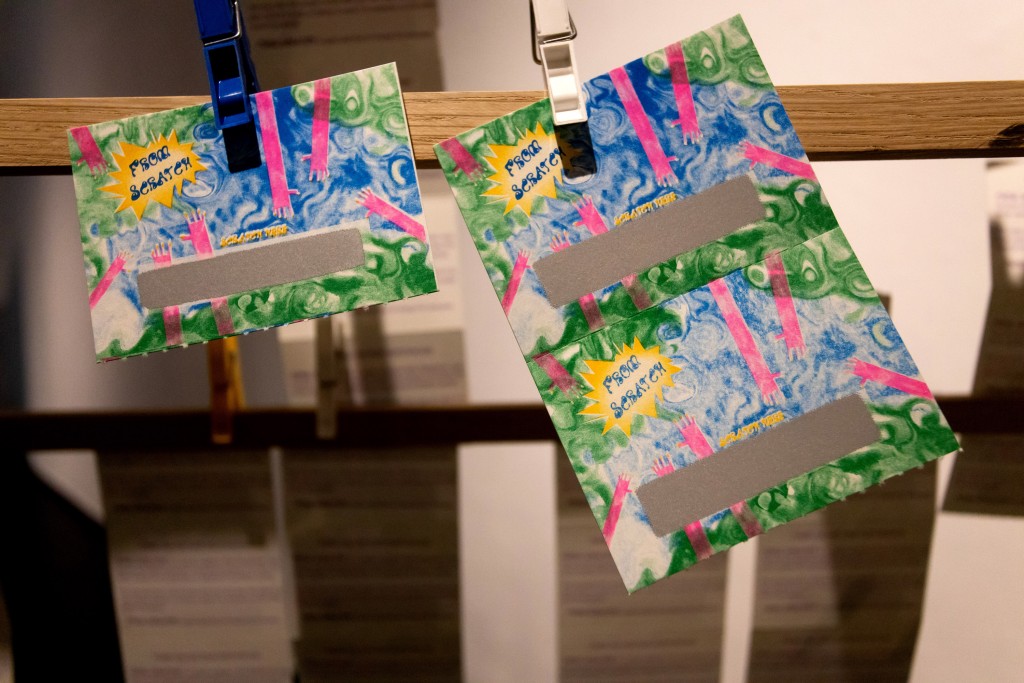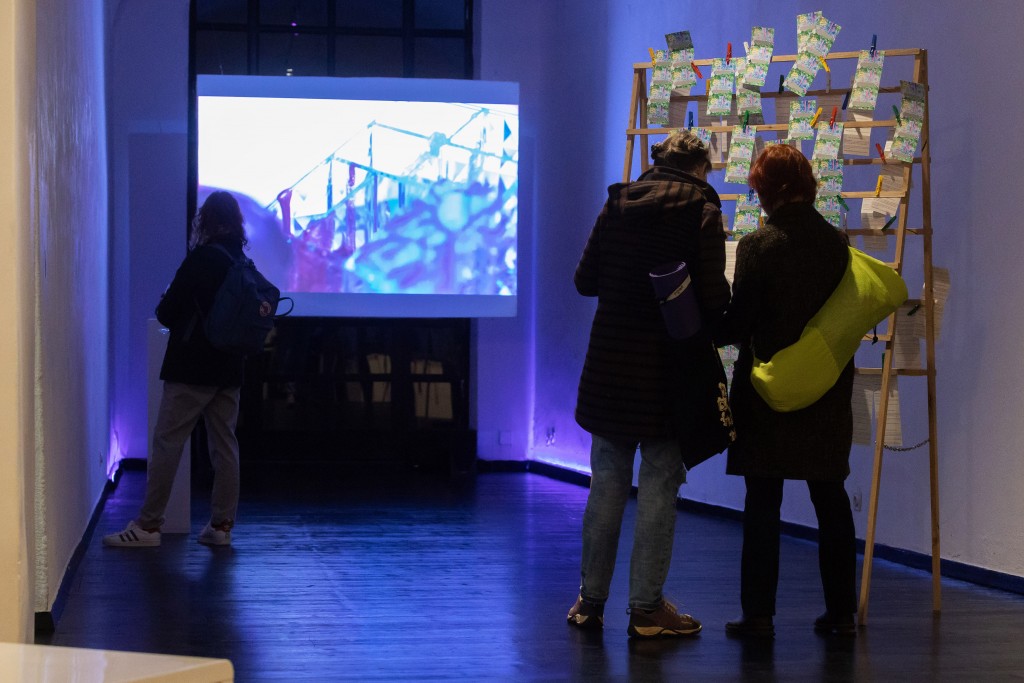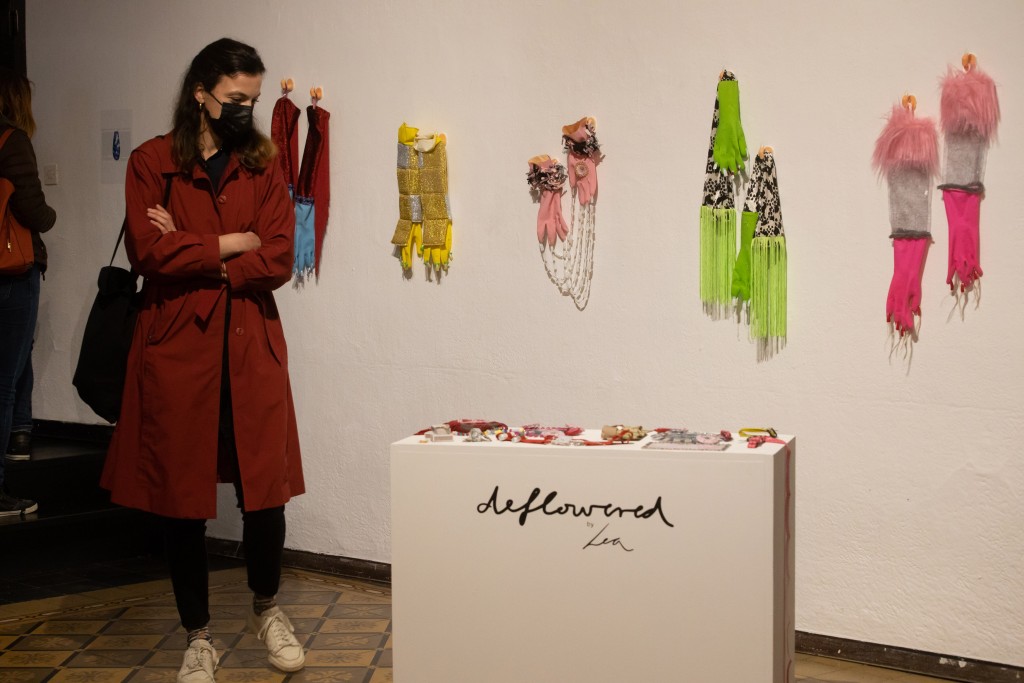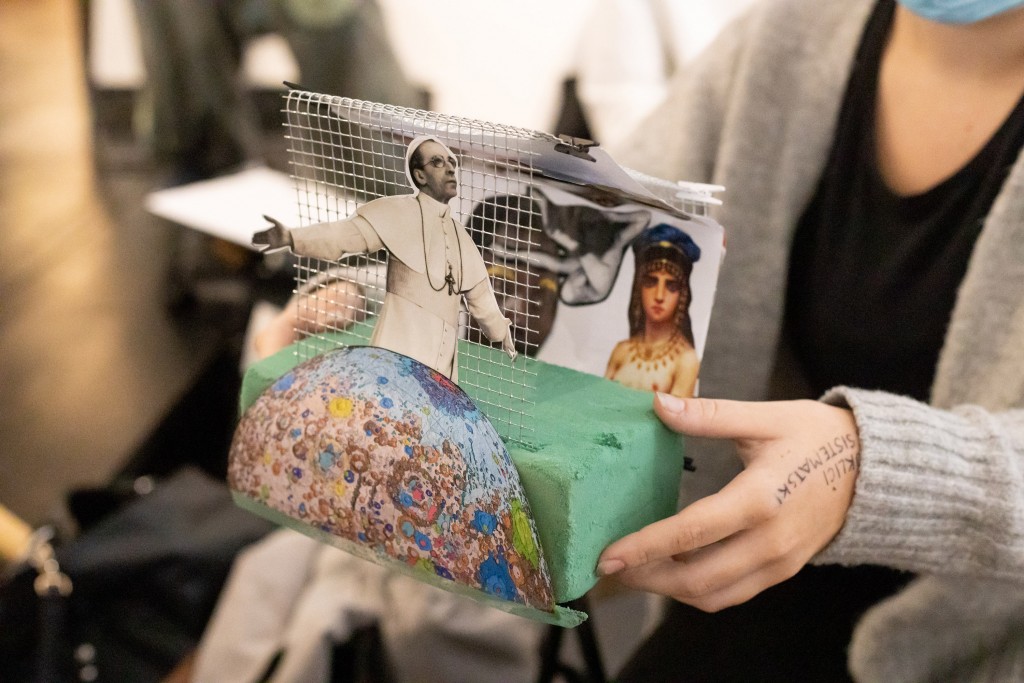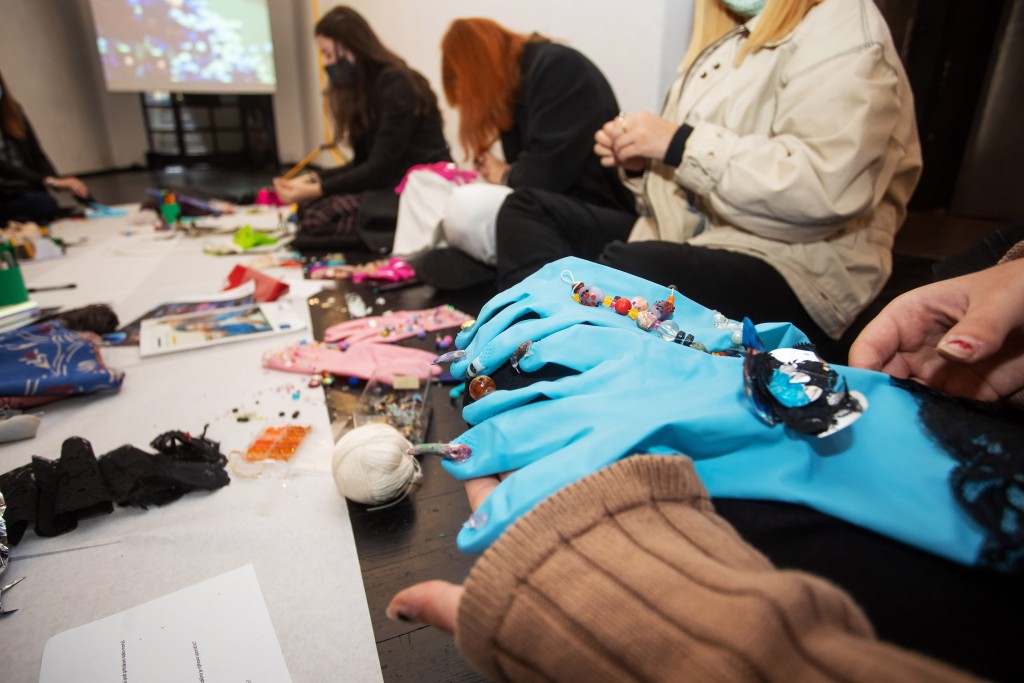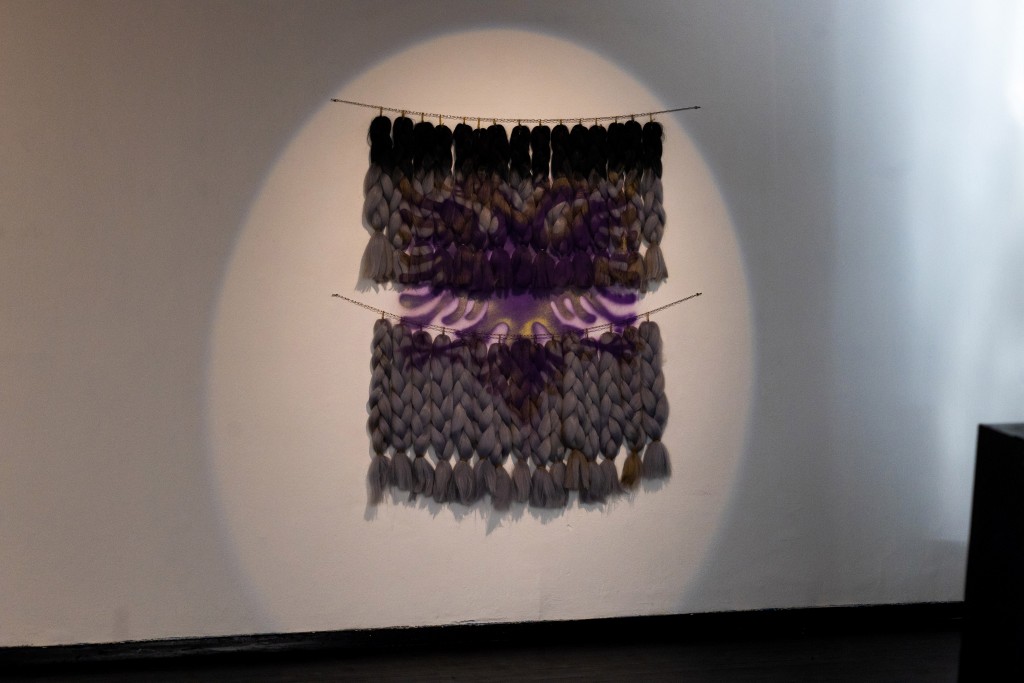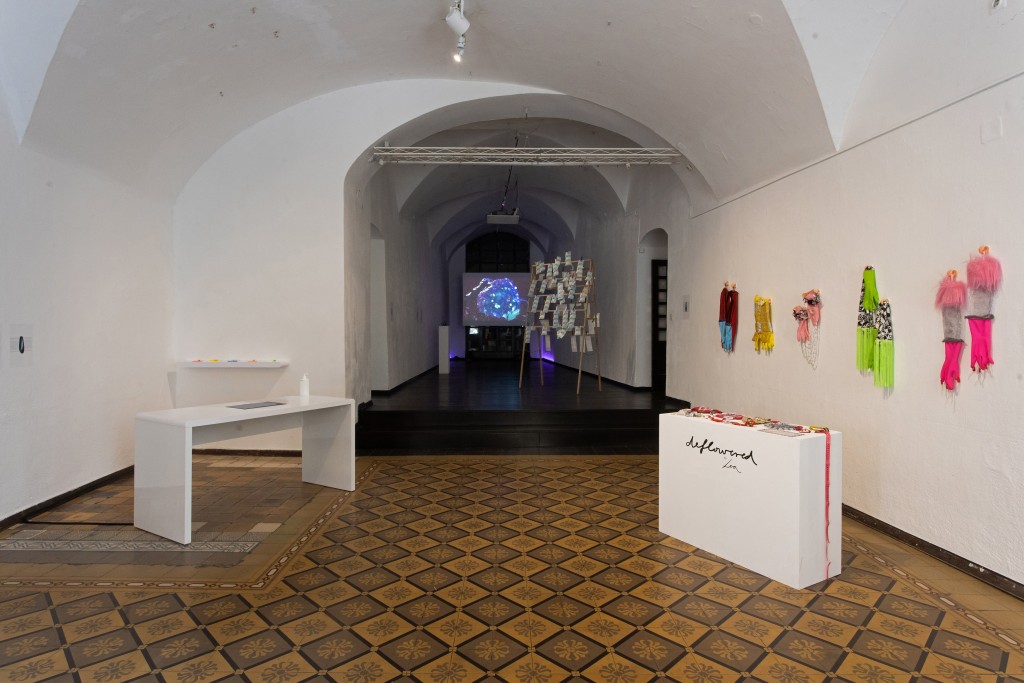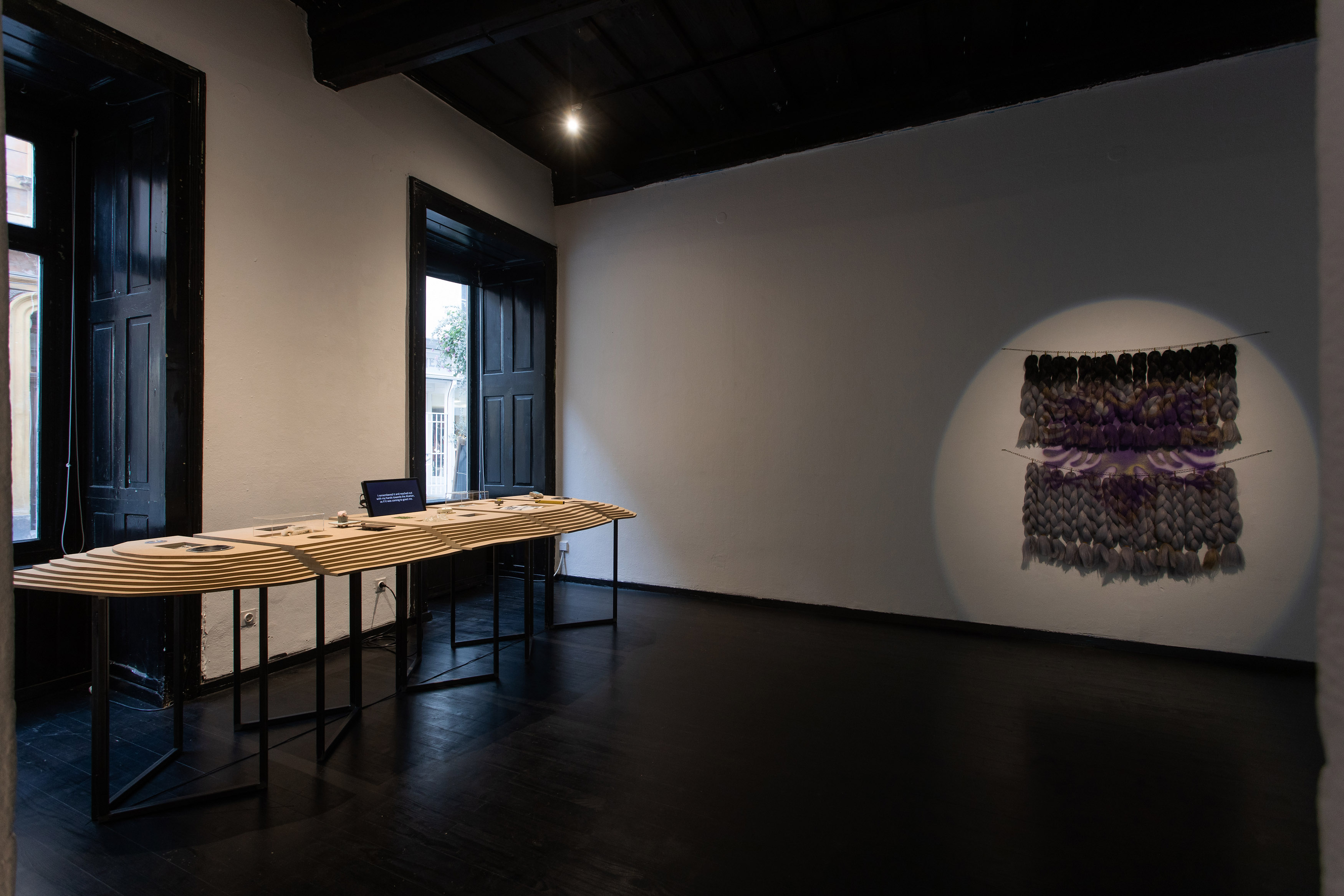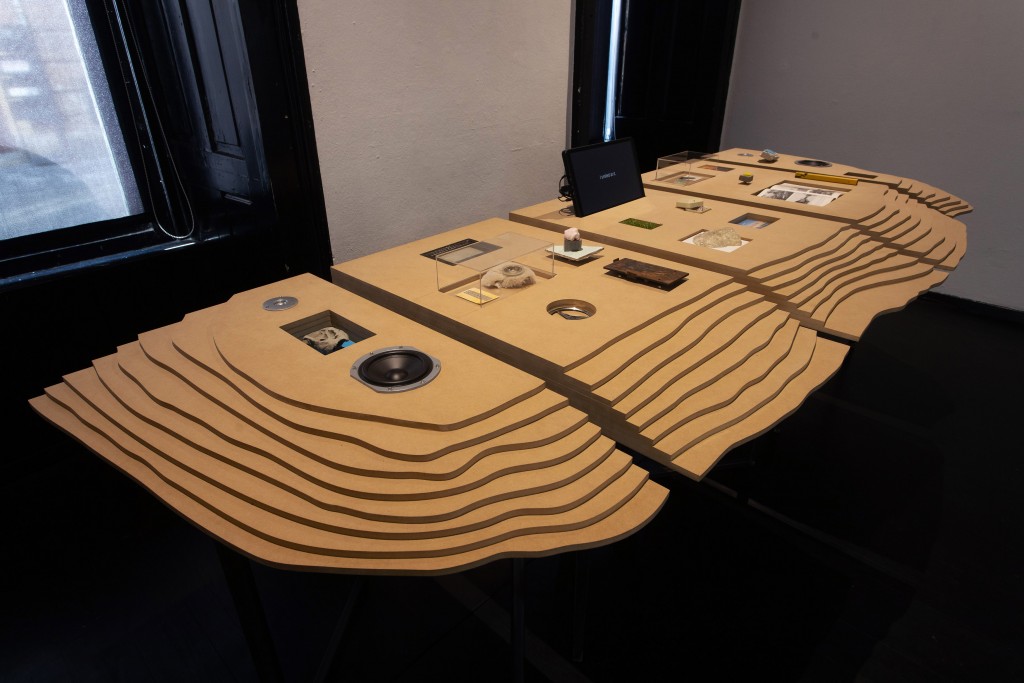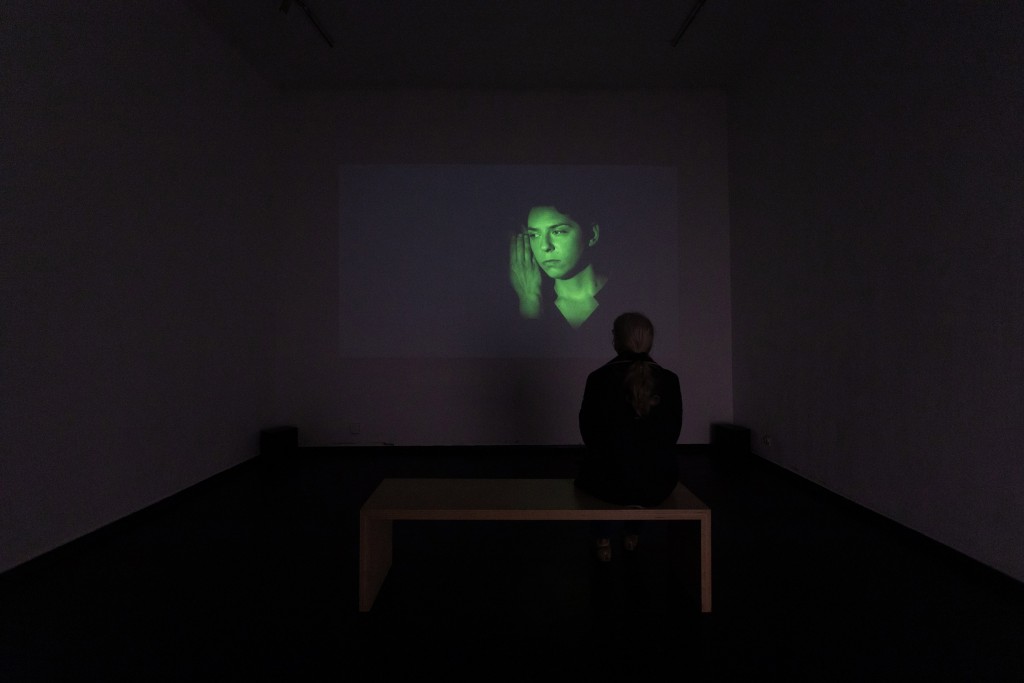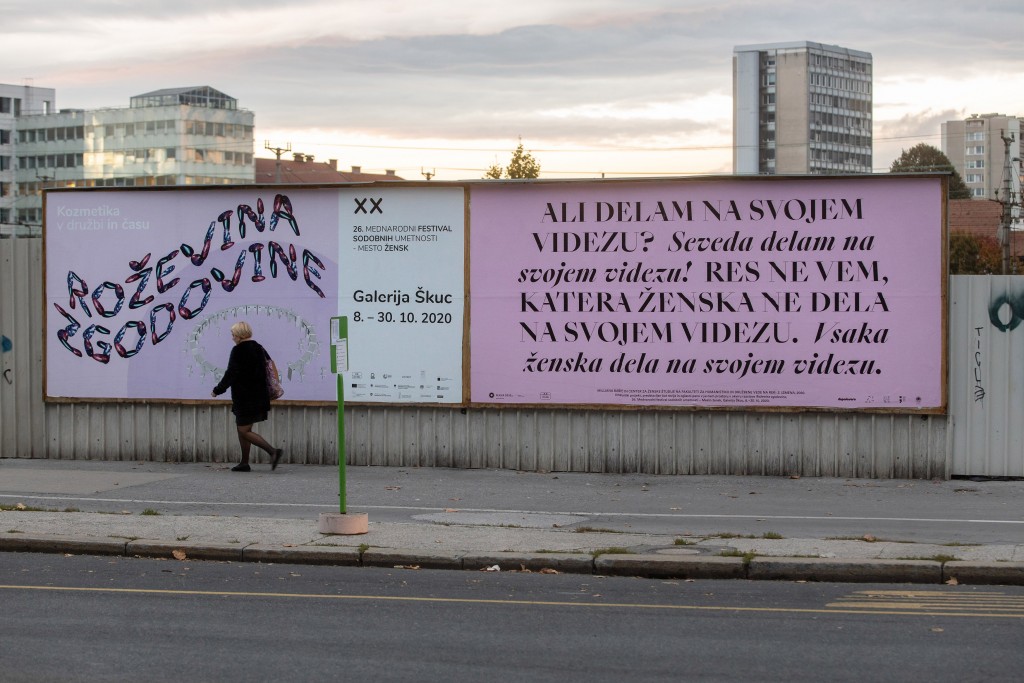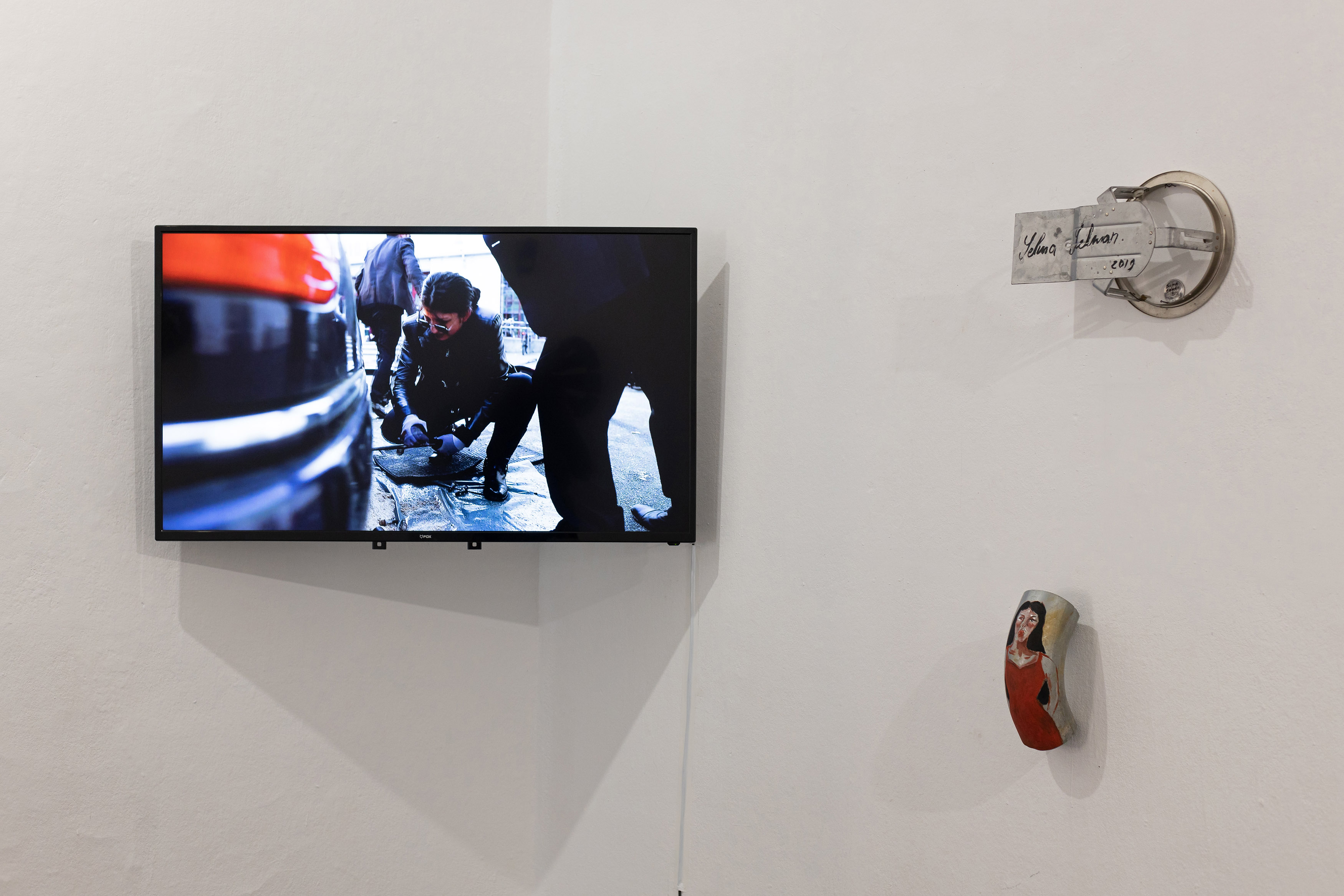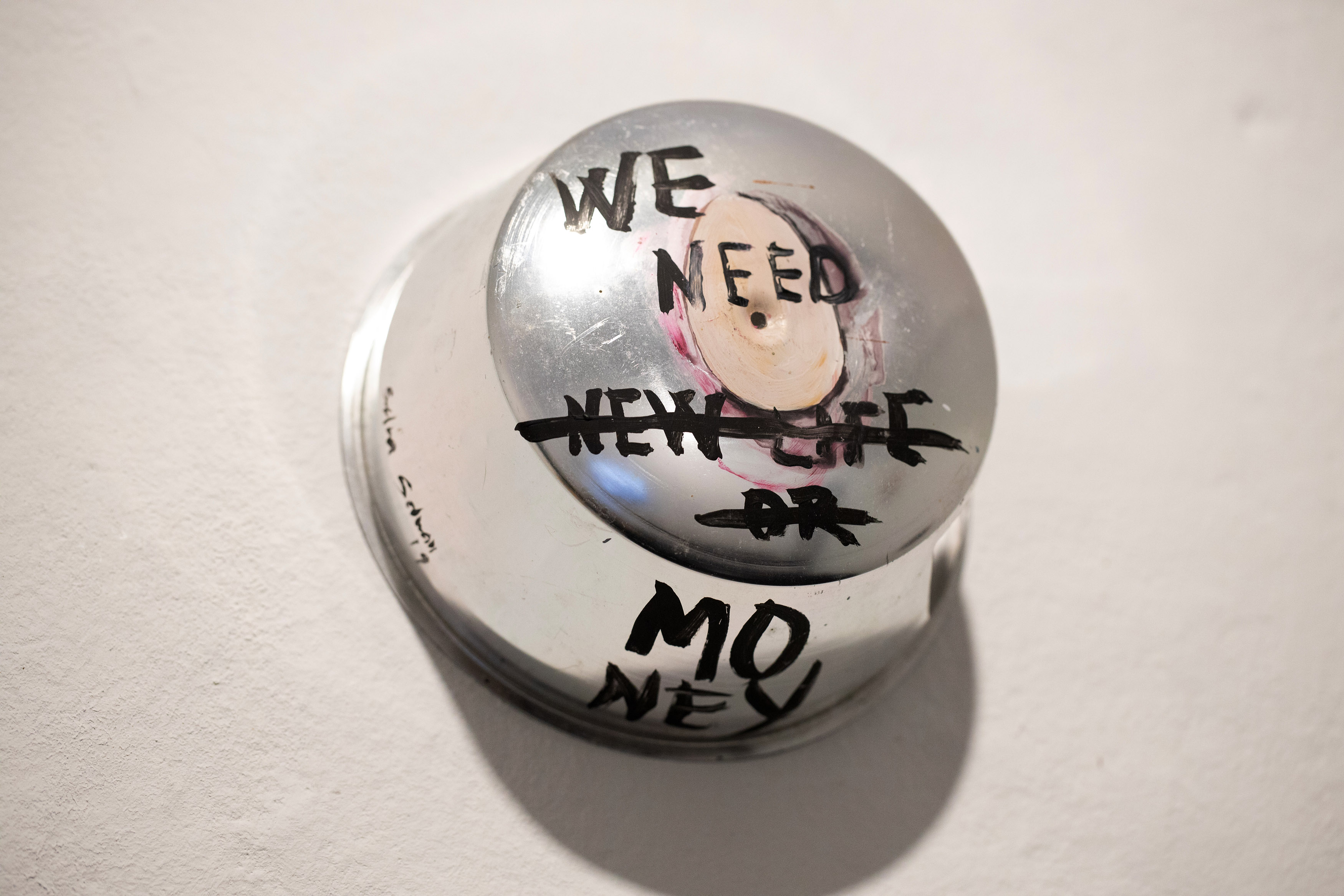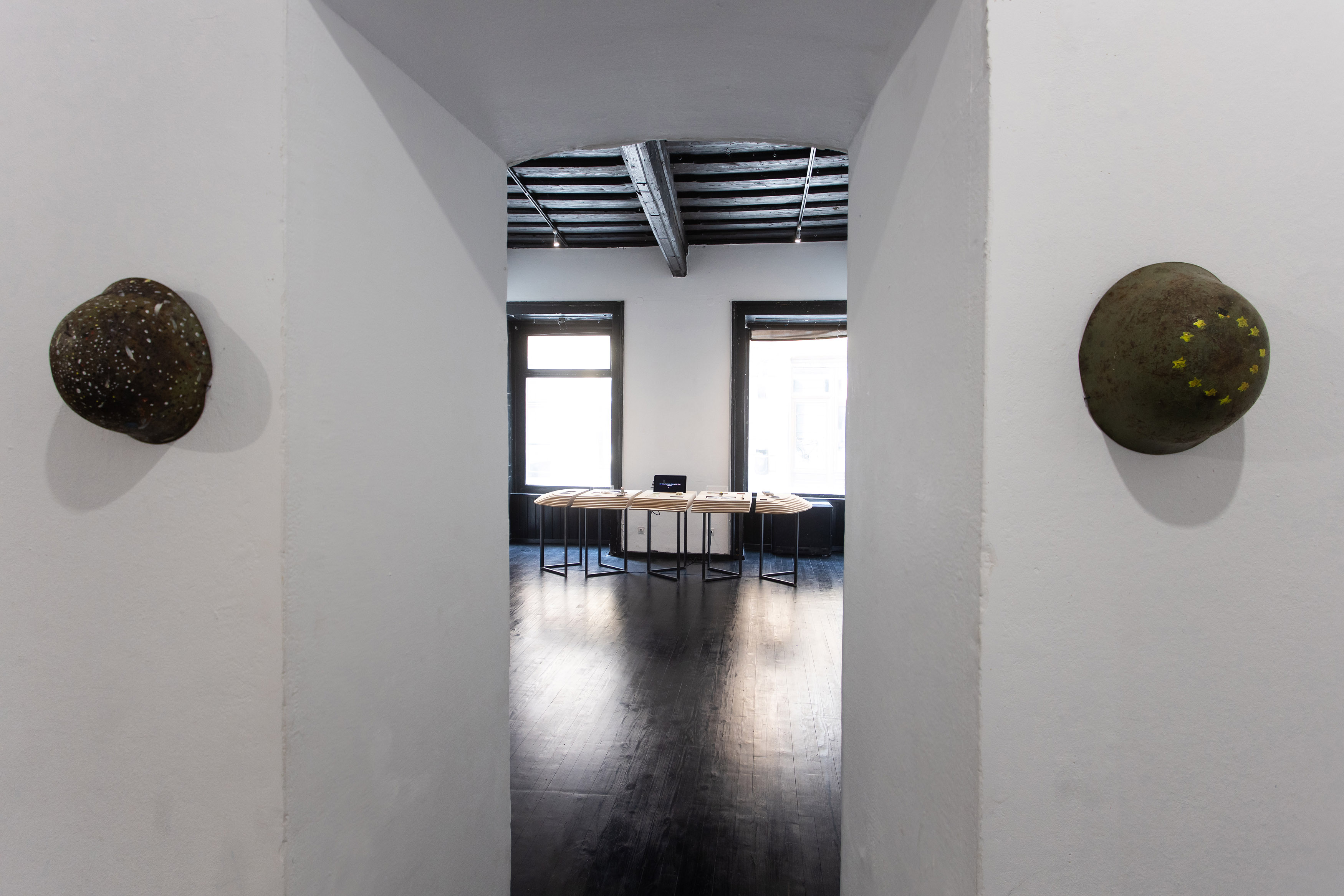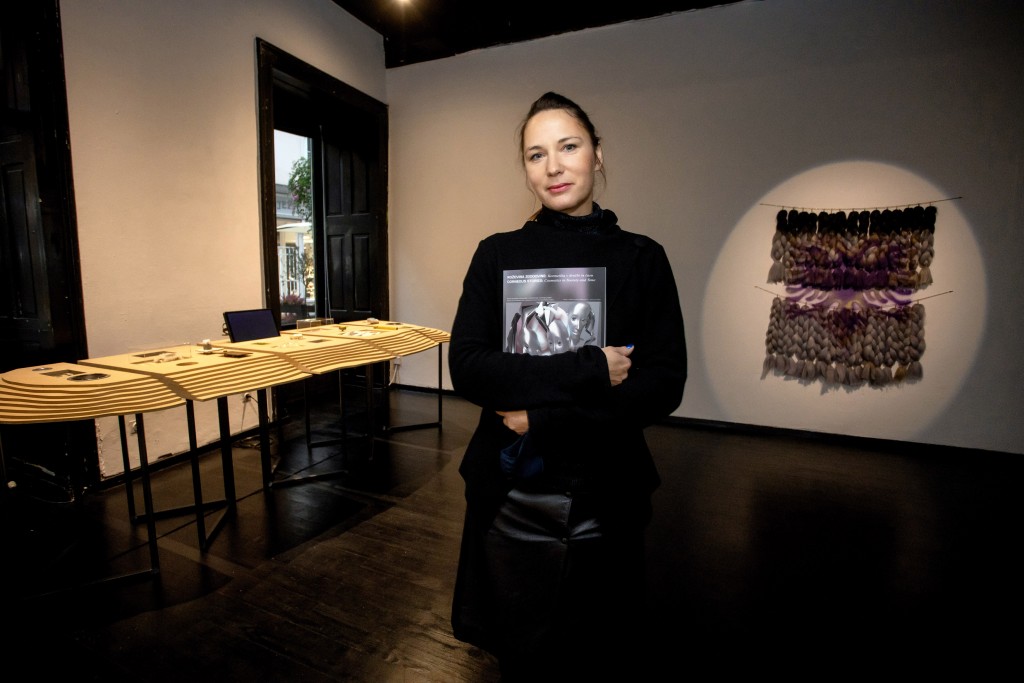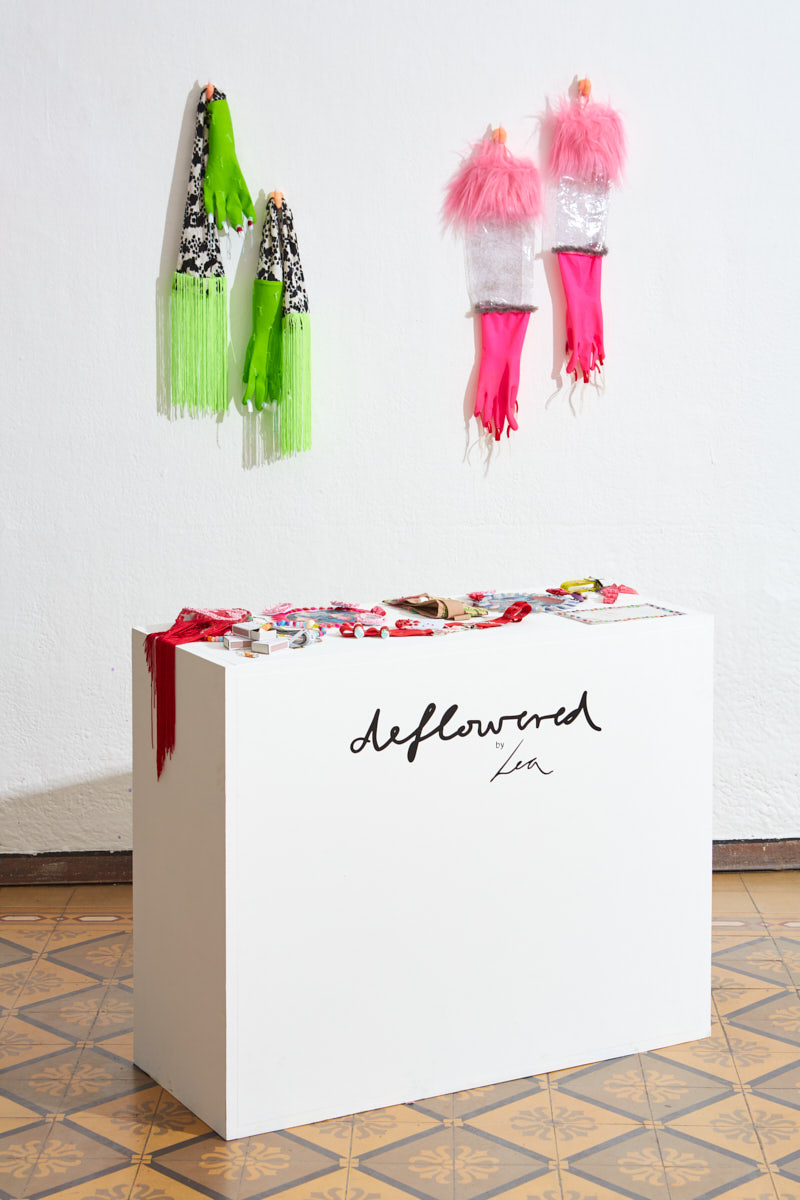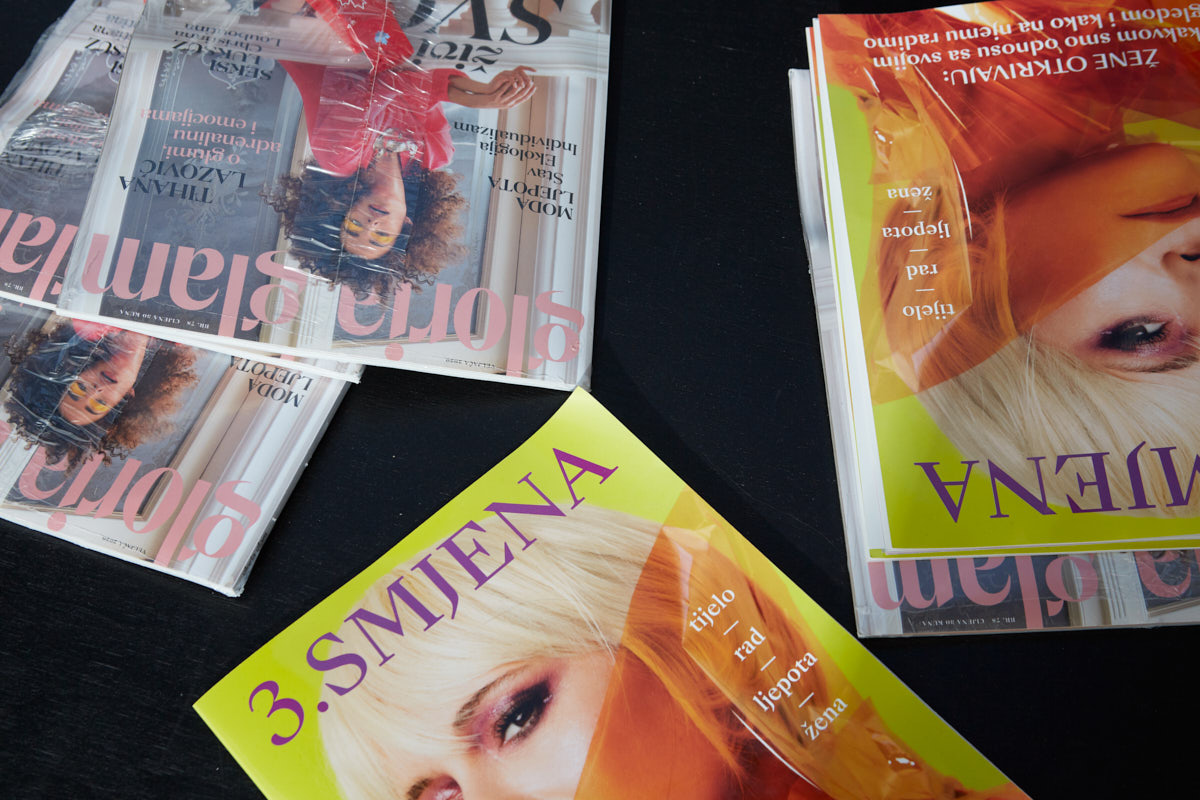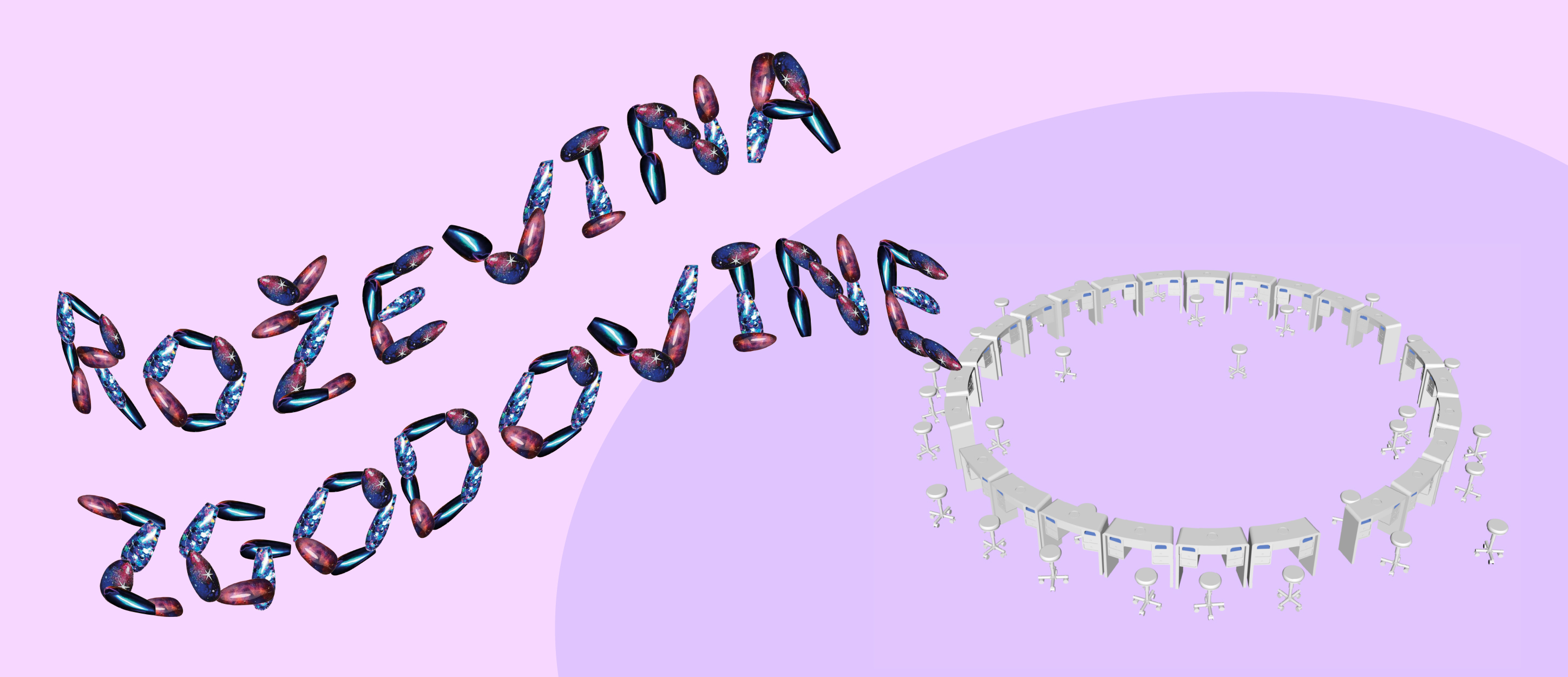Artists: Dovilė Aleksaitė, Milijana Babić, Mareike Bernien and Kerstin Schroedinger, Kim Bode, Centre for Women’s Studies at the Faculty of Humanities and Social Sciences in Rijeka, Lea Culetto, Lenka Đorojević, Anna Ehrenstein, Jinran Ha, Johanna Käthe Michel, Selma Selman
Title: Corneous Stories
Venue: Škuc Gallery
Curator: Katja Kobolt
The Corneous Stories project includes an exhibition, discursive programme, art education and a publication. It offers a platform for presentations and encounters within the transdisciplinary research of historical and societal perspectives on the material culture of cosmetics. Developed by differently organized individuals and groups – artists, researchers, art educators and students –, Corneous Stories look at history through the skin, nails and hair, asking “What do we see if we look at history and society through cosmetics and the labour of beauty?”
Revealing surprising links between different sectors of the economy (chemical, car and film industry), work regimes (service, but also forced- and migrant labour, as well as beauty labour), mobility, modernity and identity violence and how they intersect in the material culture of cosmetics and visual culture, Corneous Stories want to trigger reconsiderations of the ways of contemporary subjectivation and governance.
The exhibition (visual parlour) features the discursive parlour with Ayşe Güleç, Katja Kobolt (N*A*I*L*S hacks*facts*fictions), Milijana Babić and Ana Ajduković, Petja Grafenauer and Svetlana Slapšak with the participants of the crossdisciplinary student research project (Jerneja Erhatič, Rebeka Hvala, Jaka Juhant, Petra Lapajne, Ana Obid, Zdenka Pandžić, Neja Rakušček, Lucija Šerak, Iza Štrumbelj Oblak) publication authors (Brigita Miloš, Svetlana Slapšak) and the exhibiting artists.
The exibition also features the art education parlour with Kim Bode, Anna Ehrenstein, Johanna Käthe Micheland Katja Kobolt (N*A*I*L*S hacks*facts*fictions), Lea Culetto, Nevena Aleksovski, Sara Fabjan, Tea Hvala and Sara Šabec.

Dovilė Aleksaitė is a visual artist working with video, photography and performance. Aleksaitė’s works explore the anthropocentric worldview, notions of nature and time, emotions, and human vs. non-human consciousness. Her practice oscillates between the conscious and the unconscious, the real and the abstract, the sensual and the rational. Her works were featured in group exhibitions at the Academy of Arts (Berlin), Haus der Kulturen der Welt (Berlin), and The German House (New York), among others. She was born in Vilnius, Lithuania, and currently lives and works in Berlin. She graduated in the Arts and Media at the Berlin University of the Arts (UdK) and is a member of the N*A*I*L*S hacks*facts*fictions collaborative platform.
2020, video, 7′27′′
The materials in beauty salons live a life of their own. They travel from different containers and touch the skin, the nails and the sense of smell. The chemicals in nail polish and other products used in nail studios harden and thicken, create smoothness and vivid colors, but also create toxic clouds when evaporated and released in the air. The slow interactions and sounds of parlour and labour, the invisible toxicity and artificial shine waver between daily life in the nail salons and the world of materials that slowly occupy the (in)visible space.

Milijana Babić is an artist whose work is rooted in performative art practice, often developed in the direction of contextually-specific long-term actions in public space. Thematically, her work stems from questioning her own position as a woman and an artist in her immediate surroundings. She gained formal arts education at the Durban Institute of Technology, Republic of South Africa, and the Academy of Fine Arts and Design, Ljubljana. She is based in Rijeka, Croatia.
The Center for Women’s Studies at the Faculty of Humanities and Social Sciences in Rijeka is a scientific and research platform, a space dedicated to uniting science, art and civil society around subjects related to feminism, gender and critical theory, and the theory of sexuality. The center fosters cooperation between students, researchers, scientists, artists, stakeholders of civil society and engaged citizens. It aspires to strengthening the positive image of the role of scientific cognizance in the creation of a society of equal opportunities for all of its citizens, and also to raising awareness of the importance of gender equality, the respect for women’s human rights and the rights of all vulnerable minorities.
https://czs.uniri.hr/
Milijana Babić and the Centre for Women’s Studies at the Faculty of Humanities and Social Sciences in Rijeka: 3rd Shift
2019–2020, art project presented as a magazine and a billboard in public space
The 3rd Shift project questions the relations between the terms body – work – beauty – woman from the perspective of the so-called “third shift” of women’s labour. In this sense, the syntagma relates to what we call self-fashioning or the “reparation” of the female body with the aim of reaching the beauty ideal proposed by hegemonic visual and material culture. Connecting the idea of labour to that of free time, the “third shift” becomes the focal point for observing the two traditional shifts of women’s labour, the paid and the unpaid (housework and carework), the public and the private, influencing the entirety of labour aspects of women’s lives.
The work is presented in Ljubljana in the form of a public billboard and a publication simulating a women’s magazine. It is based on interviews with about sixty women who talked to researchers while undergoing various beauty treatments in Rijeka’s beauty parlours in 2019. The women shared their experiences and revealed their relation to their own appearance, along with the amount of time, money and energy they invest in their body and outer appearance. The work was conceptualised as an intervention (insert) in the women’s glossy magazine Gloria Glam (distributed in Croatia, February 2020, print run 10,000).

Mareike Bernien and Kerstin Schroedinger have been collaborating since 2006 in joint film, exhibition and text projects. They critically interrogate image production and seek to produce as well as reproduce images as material for thought. Their historiographic approach to film, radio play, music and text questions the means of production, historical continuities and ideological certainties of representation. Their cinematographic works include Rainbow´s Gravity (2014), Red She Said (2011), Translating the Other (2010) and As Found (2009).
2014, video, 33′
Rainbow’s Gravity is a cinematic exploration of the history of colour film, especially the history written by Agfa Wolfen, the producer of colour film stock Agfacolor-Neu in the era of Nazi Germany. Rainbow’s Gravity not only unveils the genealogy of the Agfacolor-Neu colour film as an exploitative industrial and propagandist Nazi tool, but also problematizes the role of black-and-white (moving) images in the construction of history, especially the history of Nazism and fascism. While the black-and-white medium has been – through its political appropriation – constructed to connote historical remoteness, colour has been used to suggest proximity. Rainbow’s Gravity turns to the social phenomena that were blurred and disguised from the present by the black-and-white construction of historical distance.
In her collage Toxic Polish (2019-2020), presented in the Corneous Stories publication,Mareike Bernien points to the material common to celluloid film, car paint and nail polish: the synthetic nitrocellulose. Historically, the three products based on nitrocellulose also shared the circuit of their popularisation: while in the East, the train brought moving images of the (October) revolution to the people, film in the West promoted car mobility and cosmetics.

Kim Bode is a sculptor and installation artist working with a diverse set of media and forms of artistic research. They often use the interstices of social- and environmental struggles in their work. Bode is interested in communities, kinships, queer theories, xenofeminism, critical anthropology, postcolonial critique, the decolonization of nature and plant behaviour. They have exhibited nationally and internationally. They have been participating in the N*A*I*L*S hacks*facts*fictions collaborative platform since 2018. Their lyrical texts were published in ArtLeaks and the collectively published N*A*I*L*S hacks*facts*fictions zine. In 2019, they founded the Bureau of Transitioning Landscapes group.
From Scratch is a social sculpture that explores happiness and fortune. The concept uses the notion of luck to topple the connection between wealth and precarity. The multi-layered definition of luck simultaneously describes something (in)tangible that can or cannot be affected. The distributive installation invites the exhibition visitors to reconsider the exoticisations and prejudices that are often projected onto the migranticised working class. They are encouraged to take a scratch ticket with them, to allow From Scratch to leave the confined space of the gallery for the city or enter into the private sphere of the ticket holders. By rubbing the scratch-tickets with one’s own fingernails, the viewer can actively examine their own luck or that of others.

Lea Culetto uses embroidery, assemblage, and other techniques to create objects and installations, challenging the images of femininity and feminism through the prism of fashion and the body. She has presented her works at several group exhibitions and festivals in Slovenia and abroad. Among others, she has collaborated with Alkatraz Gallery, Bežigrad Gallery I, GalerijaGallery exhibition space, the Kranj-based Layer House, Celje Contemporary Arts Centre, Zagreb Museum of Contemporary Art, and Kappatos Gallery in Athens, Greece. She has had solo exhibitions in Aksioma, Ravnikar Gallery Space, and in the Ribnica-based Miklova hiša. She was also bestowed the Academy of Fine Arts and Design (ALUO) Award and merit for outstanding achievements. In September 2019, she earned an MA in Fine Arts at the Ljubljana ALUO.
www.leaculetto.com
The Gloves project derives from the “fashion trademark” deflowered by Lea, which tackles current as well as concealed themes (in)directly connected to the female body. In the project, the artist uses a play of associations to intertwine three types of work: paid labour unpaid (house)work and beauty work. Through an artistic “appropriation” or “estrangement” of an everyday object, such as protective latex gloves, Lea Culetto transforms these shabby, industrially produced goods into a value-added product – a fashion accessory.
The defamiliarization of protective gloves, stereotypically associated with “women’s work”, the work of a “housewife” or a “cleaning lady”, triggers a reflection on the power relations inscribed into everyday objects, socially connotated in one way or another. The artist associates these themes with toxicity, and every pair of gloves playfully represents a certain context: toxicity in intimate relationships, at a workplace, in the repressiveness of the (neo)patriarchal social system, as well as literal toxicity of the toxic substances (once) present in cosmetics and cleaning products.
The deflowered by Lea project was produced by Aksioma – Institute for Contemporary Art, Ljubljana.

Lenka Đorojević is an artist whose solo and collaborative art projects explore and critically interpret the ambivalence of the position of the (artistic) subject within the context of mass media, digitally constructed realities and late capitalism – its productional, representational, ideological and symbolic narratives and strategies. In 2008, she graduated at the Graphic Department of the Fine Arts Academy in Trebinje (BIH). In 2013, she completed her master studies in Graphics at the Academy of Fine Arts and Design in Ljubljana. In the same year, she attended World of Art, the School for Curatorial Practices and Critical Writing in Ljubljana. In 2014, she became a member of the Institute of Contemporary Art Montenegro (ICA). In 2015, she received the OHO award in tandem with Matej Stupica.
EXIT refers to segments of personal experience of Hasena Sulojdžić-Terzić from Pljevlja, Montenegro, who during her seven-month captivity in the German concentration camp Ludwigsfelde worked for an underground aircraft factory owned by Daimler-Benz, the today’s Mercedes-Benz corporation. The work deals with the phenomenon of phantasm and the recalcitrance of the imaginary structure and the world of symbols, which eludes the violence in the camps, conducted on a symbolic, mental and instrumental plane, the final and the concrete, thus allowing for the possibility of subversion, interruption and exit.[1] Hasena’s experience of death, represented through the narration of the story The Alsatian,[2] testifies to the existence of something unbreakable and untameable in every human being – the vitality of a life which can never be entirely suppressed and over which no system is able to exercise complete control. It is a space of struggle in which the practices of freedom can also disarm the contemporary psychopolitics of neoliberal capitalism, dependent labour, continuous re-colonization and fascization, and open up to a mode of existence which does not yet have a name, which is a future yet to be written!
[1] Achille Mbembe, Critique of Black Reason, Durham: Duke University Press Books, 2017.
[2] The short story The Alsatian (Vučjak) was written by Radovan Vujadinović, based on the testimony of Hasena-Sulojdžić Terzić about an event which had happened in the German concentration camp Ludwigswelde. The story was published in the short story collection The Trail (Belgrade: “ČETVRTI JUL”, 1984).
EXIT was a derivation of Lenka Đorojević’s 2019 artwork, produced for Missing Stories. Forced Labour under Nazi Occupation. An Artistic Approach exhibition (Goethe-Institut Belgrade). For the Corneous Stories publication, the artist has also developed a visual collage.
Concept and realization: Lenka Đorojević; Curator: Natalija Vujošević; Consultation: Jadranka Ještrović, Hasena Terzić-Sulojdžić’s daughter; Writer of The Asaltian: Radovan VujadinovićDesign: Matej Stupica; Wood work: Wood/Mood – Martin Lovšin Schintr and Miran Bratuš; Metal work: Andraž Tarman; Programming: Matic Potočnik; Voice: Lidija Kordić; sound recording: Nemanja Bečanović; sound post-production: Miha Šajina; consultation: Jadranka Ještrović, Hasena Terzić-Sulojdžić’s daughter; author of The Asaltian: Radovan Vujadinović; translation: Milica Vuković Stamatović; proof-reading: Matthew Whiffen; special thanks: Jadranka Ještrović, Radovan Vujadinović, Matej Stupica, Lina Rica, Nataša Tepavčević, Monika Schnell, Ana Pavlović, Ljiljana Karadžić, Alliance of the NLS Fighters and the Anti-Fascists of Montenegro, Nikšić; comrades Desa, Zuvdija Hodžić, Slobodan Bato Mirjačić; the Vujičić, Đorojević and Stupica family.

Anna Ehrenstein studied photography and media. Her transdisciplinary artistic practice is focused on diverse forms of research, collaboration and mediation. Her work explores the relation between humans and objects in the digital age. Her mother came from Albania to Germany on a working visa, while her father was refused asylum and had to leave. After a trans-European odyssey, he started anew in Tirana. Ehrenstein stayed in Germany with her mother, but effectively grew up across two cultures and two sides of Europe. This biographical peculiarity sparked Anna Ehrenstein’s interest in the necropolitics of migration. Since she had been raised between the two societies, her work reflects on diaspora-related high and low cultures, the social life of things and the historical taxonomies of knowledge. Ehrenstein has been active in the N*A*I*L*S hacks*facts*fictions collaborative platform since 2018.
www.annaehrenstein.com
Anna Ehrenstein’s installation, Inverted Appropriation, at the Corneous Stories exhibition consists of two separate works dealing with the complexities of labour and material culture regarded as fake. Dominant structures intersect with intellectual property law to enforce neocolonial systems of oppression based on constructions around fake; in the installation, particularly around Gucci, stiletto nails and hair extensions. The installation examines cultural appropriation of material cultures, specific to minorities, by dominant groups who perceive it as an “enrichment” of their own culture. The same definition of appropriation shapes discourses around “box braids”, an African hairstyle, which serve the artist as material for the wall work. While White Hollywood gets Coolness and generates Capital with this particular way of braiding, African American Women lose their jobs along the way. In Albania, this braiding style has been trendy for several years, as well.
As part of Corneous Stories, Anna Ehrenstein will also present the Superior Fakes art education project.

Anna Ehrenstein’s installation at the Corneous Stories exhibition consists of two separate works dealing with the complexities of labour and material culture regarded as fake.
According to Antonio Gramsci, “subalternity” means being part of an excluded group. What happens when the subaltern becomes the appropriator? How do processes of cultural appropriation change through social media? Can the subaltern tweet?
“For Ehrenstein, the question isn’t what is real and what is fake: rather who can afford to wear both.”– Liza Premiyak

Jinran Ha has been living and working in Berlin since 2012. In her multidisciplinary practice, she often animates everyday objects and creates metaphorical contexts, situating and altering the relation between individuals and collectives in the sociopolitical frame. She studied Human Environment and Design at Yonsei University (Seoul) and Fine Art at the Central Saint Martins – College of Art and Design (London). She continued her studies at the Dresden Academy of Fine Arts and graduated at the Berlin University of the Arts (UdK) in 2020, in prof. Ursula Neugebauer’s class. She exhibited at the Kulturpalast Wedding International and uqbar (both in Berlin) and at the Lothringer Halle 13 in Munich. She recently won the second prize at the Neuköllner Kunstpreis 2020.
Johanna Käthe Michel studied in Kiel and Tel Aviv, and is currently studying Fine Arts at the Berlin University of the Arts (UdK). In 2018, she graduated with a thesis on aesthetic taste norms in institutional art education. Her artistic practice shows a penchant for industrially produced objects, found text and footage, collaborative contexts and public space. She mainly uses installation, lens-based media, text and performance. Her mediative, discursive and political activities are also framed within her artistic practice. Michel’s works have been shown at institutional and off-spaces, such as the station urbaner kulturen (nGbK, Berlin), Museum of Photography (Berlin), Lokal-int (Biel/Bienne), Stadtgalerie Kiel and Lothringer Halle 13 (Munich).
Jinran Ha and Johanna Käthe Michel: Dialogue of the Objects/Komische Fragmente
2018–2020, installation of online work accessible via QR code
Researched for and first produced within N*A*I*L*S hacks*facts*fictions, a project that explored the nail salon as a site of critical, queer and transcultural practices, as well as intersectional care politics, both works by Ha and Michel find a new material representation in the Corneous Stories exhibition.
In the Dialogue of the Objects/Komische Fragmente, artists of different backgrounds disconnect from their physical body, which is always related to individual privileges and violence because of the ways in which identity categories are constructed. Instead, industrially produced objects used in nail studios chat with each other and “innocently” touch upon matters of racism, sexism, identities, capitalism, etc. The talking objects are referring to Sergei Tretiakov’s Biography of the Object (1929), in which the Soviet writer proposed to research social conditions through objects rather than the people who produce them.

Jinran Ha and Johanna Käthe Michel: Manicure Conference Modelage
2018–2020, installation of animated 3D model on touch-screen
The utopian architecture of the Manicure Conference Modelage is designed for a potential global nail artists’ conference concerning women’s labour, solidarity and biopolitics. Ha and Michel developed the work by taking into account the typical architecture of a nail salon: a manicure table for two, enabling the interaction between customer/consumer and worker while disconnecting the nail artists from each other. The artwork proposes different arrangements between nail workers and the public/customers who can physically interact with the architectural modelage via touch-screen and rearrange the architectural situation. The manicure tables in the artwork oscillate between their usual arrangement in a nail salon and a round-table discussion at a conference, referencing the summits of the historical Non-Aligned Movement established in Belgrade in 1961. Drawing on the principles agreed at the Bandung Conference in 1955, the movement pushed forward the politics and economics of solidarity between developing countries, many of which fought with legacies of colonialism and imperialism.

Selma Selman, artist and Romani activist, earned her Bachelor of Fine Arts degree from Banja Luka University’s Department of Painting, and graduated from Syracuse University (USA) with a Master of Fine Arts degree in Transmedia, Visual and Performing Arts. Her search for contemporary political resistance stems from her personal experience of oppression as a woman of Romani origin. Her artworks aim at protecting and empowering women, as well as enacting their collective self-emancipation. Selman is the founder of Get the Heck to School, an organization for the empowerment of Romani girls. She has exhibited widely and received several awards, among them the 2019 White Aphroid Award for outstanding artistic achievement. She lives between Europe and the USA.
The video Mercedes Matrix documents a collective performance, originally performed at the 2019 edition of Krass Kampnagel festival in Hamburg, in which the artist and her family re-enacted their usual daily labour practice: the dismantling of a Mercedes-Benz car to be recycled as spare parts. The integration of the family’s economic activity to the art sector highlights the value-making processes within the arts.
According to art historian Jasmina Tumbaš, a distinctive relation between the body and identity is central to Selma Selman’s artistic practice. And similarly to feminist practices from the 1970s onward (e.g. also found in the works of Hanna Wilke or Sanja Iveković), Selma Selman questions the violence, inherent to identity politics: the processes of objectification, othering and exoticisation of the so-called “others”.

Selma Selman is presenting her artistic opus in Ljubljana for the first time with Virtual Materialism, a series of newly commissioned paintings on metal, and Mercedes Matrix, the video documentation of her performance. With both works, Selman turns to labour and value production in the economics of car industry and art (and indirectly, through beauty, of cosmetics)* and to the various levels of their “economization”: from the material and financial to the branded and habitual.
“I have always had a very personal relationship with metal, as my family and I have been collecting and recycling it to sustain ourselves since my childhood. My latest paintings on scrap metal depict impressions of everyday life, references to art history, and text collages. Humour, wordplay and my incessant probing of the boundaries of art fuse painting and sculpture into small intimate objects.” – Selma Selman
*Cosmetics and car mobility are historically connected by the chemical industry (the first industrial nail polish was a by-product of nitrocellulose car paint), as well as the medium through which they have been promoted: the coloured moving image of the celluloid film. Both cosmetics and car mobility are also to be considered as important modern cultural practices of women’s emancipation despite their connection to governance and the ongoing environmental crisis.
Katja Kobolt works as an interdependent curator, art educator and researcher: City of Women in Ljubljana (2001–2008), post-Yugoslav curatorial collective Red Mined (2011–), collaborative platform N*A*I*L*S hacks*facts*fictions (2018–), Lothringer13 Florida in Munich (2016–2019), exhibition and forum no stop non stop at Lothringer13 Halle in Munich (2018), etc. Katja Kobolt obtained a PhD at the LMU München University researching the memory politics on post-Yugoslav wars and feminist canon methods, and has been active as a lecturer (Humboldt University; UDK Berlin; currently at LMU Munich, Institute for Art Pedagogy), editor and writer.
